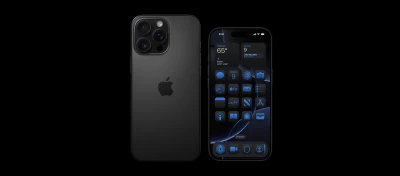Introduction
Smartphones play a major role in our daily lives, but there are ongoing worries about their potential impact on health. A key concern is the Specific Absorption Rate (SAR), which indicates how much radiofrequency (RF) energy is absorbed by the body when using a mobile phone. In this article, we will dive into SAR values, compare them to European Union (EU) standards, and examine the compliance of popular mobile manufacturing brands.
Understanding SAR
Specific Absorption Rate (SAR): Measures the amount of radiofrequency (RF) energy absorbed by the body during phone use. Measured in watts per kilogram (W/kg).
EU Standard: The European Union has established a SAR limit of 2.0 W/kg averaged over 10 grams of body tissue. This limit is significantly below levels that pose any known health risks.
International Recognition: The International Commission on Non-Ionizing Radiation Protection (ICNIRP) also recommends this SAR limit, and manufacturers follow it to ensure compliance. The FCC limit for public exposure from cellular telephones is an SAR level of 1.6 watts per kilogram (1.6 W/kg) over 1 gram of body tissue.
SAR values are measured for perspective zone/spot in human body to see the effects:
- Head: This measures how much radiation your phone emits when you hold it against your ear during a call.
- Body-Worn: This category considers the exposure when you carry your phone on your body, like in a pocket or on a belt.
- Hotspot: If you use your phone as a mobile hotspot to share internet with other devices, this value matters.
- Phablet: For those larger devices that are a mix between phones and tablets, the SAR value is relevant.
Comparing SAR Values
- iPhone 13 Pro Max: SAR value 0.99 W/kg (head) and 0.99 W/kg (body)
- Samsung Galaxy S21 Ultra: SAR value 1.09 W/kg (head) and 1.02 W/kg (body)
- Google Pixel 6 Pro: SAR value 1.17 W/kg (head) and 1.13 W/kg (body)
- OnePlus 9 Pro: SAR value 0.91 W/kg (head) and 1.35 W/kg (body)
- Xiaomi Mi 11 Ultra: SAR value 1.15 W/kg (head) and 1.18 W/kg (body)
- Huawei P40 Pro: SAR value 1.03 W/kg (head) and 1.37 W/kg (body)
- Sony Xperia 1 III: SAR value 1.01 W/kg (head) and 1.05 W/kg (body)
- Motorola Edge+ (2021): SAR value 1.15 W/kg (head) and 1.11 W/kg (body)
- LG Wing: SAR value 1.26 W/kg (head) and 1.21 W/kg (body)
- ASUS ROG Phone 5: SAR value 1.29 W/kg (head) and 1.57 W/kg (body)
According to RFSAFE, he Samsung Galaxy S24 Ultra currently holds the distinction of having the highest Specific Absorption Rate (SAR) values among smartphones. SAR values indicate how much radiation a phone emits and its potential impact on health. For the S24 Ultra, the simultaneous transmission SAR values are 1.59 W/kg at the head, 1.52 W/kg when worn on the body, and 1.45 W/kg when used as a hotspot alongside other transmitters. These elevated SAR levels are essential to consider for users who prioritize safety and want to minimize radiofrequency exposure.
| PHONES AVAILABLE IN INDIA | SAR MEASURED | SAR LIMITS(W/KG) | RELEASE DATE |
| Xiaomi Black shark 2 | 1.92 | 1.6 | June 2019 |
| OnePlus 5T | 1.68 | 1.6 | Nov 2017 |
| Xiaomi Mi A1 | 1.75 | 1.6 | Sep 2017 |
In your Android Phone you can check your SAR information by dialling *#07#
In iPhone do the same, but after pressing *#07#, press the dial button and then you can find necessary RF Exposure information of your mobile device.

Debunking Radiation Myths
- Hospital and Operation Theater: Mobile manufacturers advise turning off phones in these areas due to sensitive medical equipment. However, this precaution is more about interference than radiation risk.
- Gas Stations: While there’s no documented link between mobile phones and gas station explosions, it’s best to turn off your phone as a safety measure.
The Myth of Data Turn-Off for Health Safety During Sleep: A Scientific Examination
The idea of turning off data on mobile phones for health safety concerns during sleep is a topic often debated in popular discourse. However, from a scientific perspective, the necessity of this practice remains questionable. While some argue that turning off data reduces exposure to electromagnetic radiation and promotes better sleep quality, empirical evidence supporting this notion is limited. Studies investigating the impact of mobile phone radiation on sleep quality yield inconclusive results, with some suggesting a potential link between exposure to electromagnetic fields and disruptions in sleep patterns, while others find no significant association. Therefore, the decision to turn off data during sleep should be based on individual preferences rather than solely on perceived health concerns. While reducing exposure to electromagnetic radiation is prudent, further research is needed to ascertain the extent of its impact on sleep quality and overall health, thus dispelling or substantiating the notion of data turn-off for health safety during sleep.
Conclusion
Rest assured, mobile phones adhere to strict SAR standards. As long as you choose reputable brands (in fact all the publicly available mobile phone or smartphone unit or the commercially available phones are field tested and must pass the international EU and FCC regulatory guideline before commercialize them on the market as consumer electronics) and follow safety guidelines, there’s no need to worry about radiation. So keep using your smartphone responsibly, and stay connected without fear!
Read FCC regulatoy guideline about SAR safety form here.

















